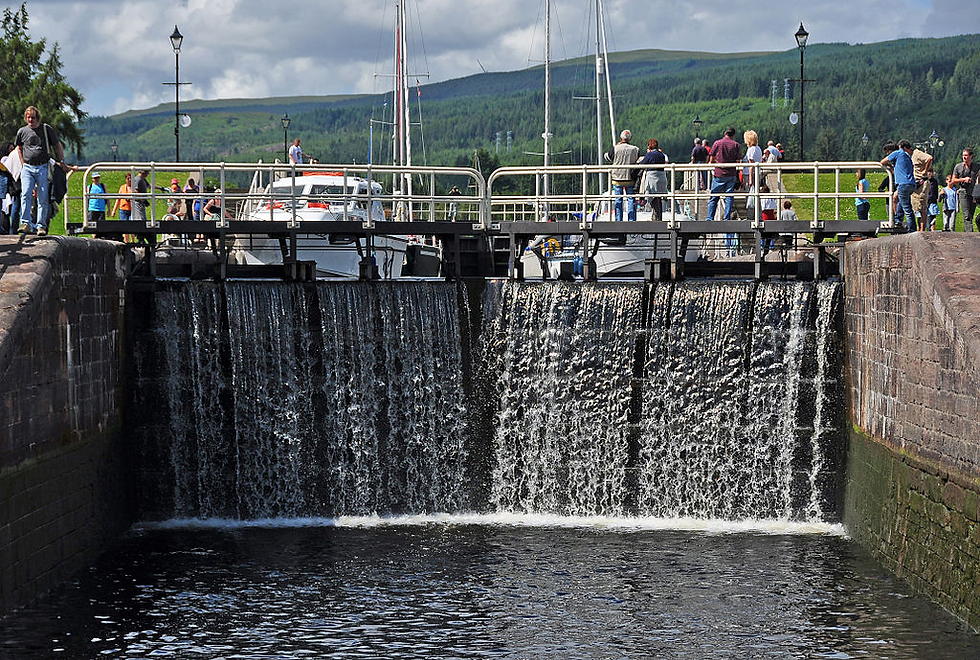Why you should stay near Loch Ness
- The Highland Club Team

- Jun 11, 2019
- 2 min read
Updated: May 6, 2023
When organising a trip to the Highlands, where you choose to stay is the first hurdle. The Highlands are deceptively big and there is an abundance of things to tick off whilst you roam the captivating northern landscape. But the first and (dare we say it) only area you should consider is simple: Loch Ness.

Linked famously as the habitat of the Loch Ness Monster, mythological creature hunters and wilderness enthusiasts have flocked to Loch Ness for years. Of the Highlands, it is likely the most famous location or second only to Inverness. Loch Ness is important not only in its fascinating role in Scottish legends and popular culture but also because it is the heart of the Scottish Highlands. Every other major location can be accessed from Loch Ness whether the Isle of Skye, Inverness or Cairngorms National Park.

Yet Loch Ness can be defined as remote. The Loch itself spans 37 kilometres making it is the second largest Loch in all of Scotland. Multiple castles and forts have been built along the shores of Loch Ness. And at every curve of the Loch, in every wee nook and crannie there is serene beauty. There is peace. There is quiet. You’ll experience an unforgettable sunrise on the southern shores of Loch Ness. And I say sunrise as that is the view from The Highland Club, with Loch Nessie stretching out towards the North-East. The Highland Club enjoy a view literally like none other. The grounds were positioned by the British military in the 18th century for the maximum benefit of the Loch, a benefit we still reap today. Unlike the northern shore, the surrounding town of Fort Augustus is relatively small. And The Highland Club is the only loch-side accommodation on the south shore in fact, so our views are unique and unparalleled.

Plan of Fort Augustus showing the location of the Old Barrack
Loch Ness is a bucket list location (as is spotting its famed inhabitant). It has held its place in Scottish culture and world mythology for a reason: it is the closest to magic you will find in the Highlands. And as Hogwarts can be found somewhere in the rolling hills, that is no small statement. You will fall in love where you choose to stay in Scotland. It becomes the heart of your trip, but also your memory of the wonderful and wild country with so much to offer individuals and families alike. Escape to the Highlands and Loch Ness for an adventure you will never forget.
This post was first published 11th June 2019




The simplest-looking jump turns into a mind game of physics, timing, and trickery wacky flip.
The Krishak Bandhu Status Check is especially helpful for small and marginal farmers.
Through Kusum Yojana, farmers have the chance to earn money by selling extra solar power.
I quickly got my scheme details on Jan Soochna; it’s truly a user-friendly platform.
Transportation and logistics form the backbone of global trade, enabling goods to move efficiently from manufacturers to markets across the world. They connect producers, suppliers, and consumers, creating a seamless flow of products and services. Modern logistics relies on advanced technology, efficient routes, and reliable transportation modes like ships, planes, and trucks. Here efficiency and timeliness are critical, as delays can impact entire supply chains. By integrating smart tracking systems and sustainable practices, the industry ensures smoother operations and reduced environmental impact. In today’s interconnected economy, transportation and logistics remain vital for economic growth and international collaboration.